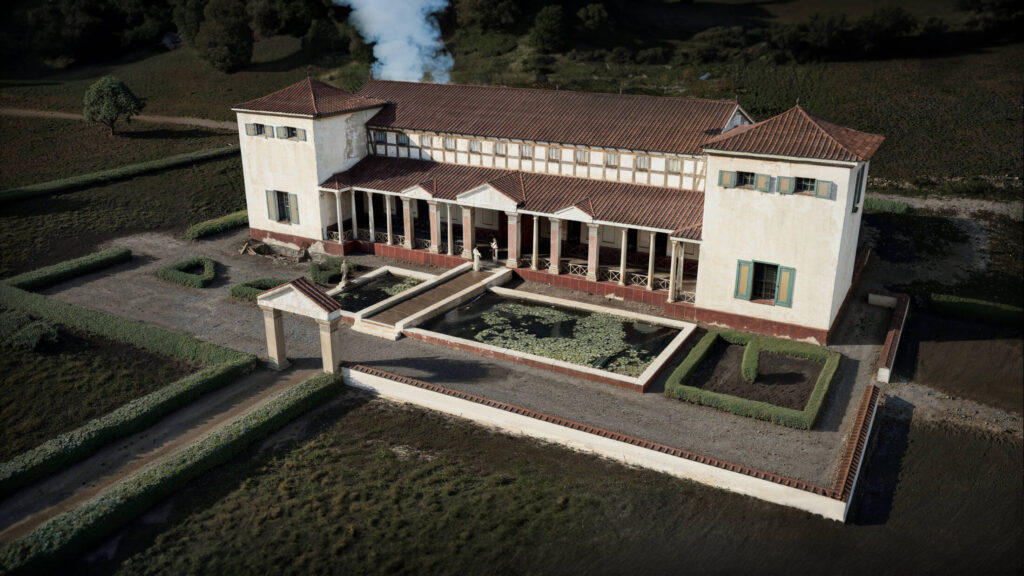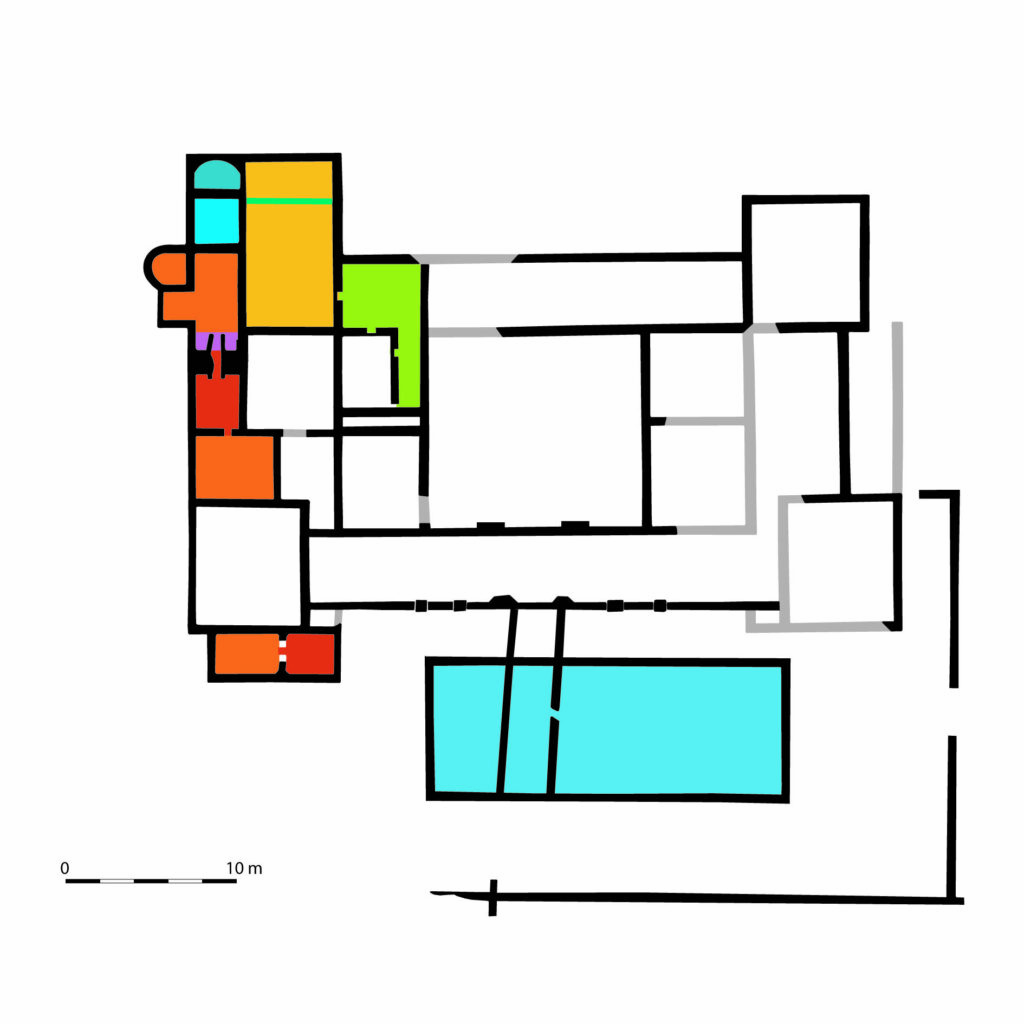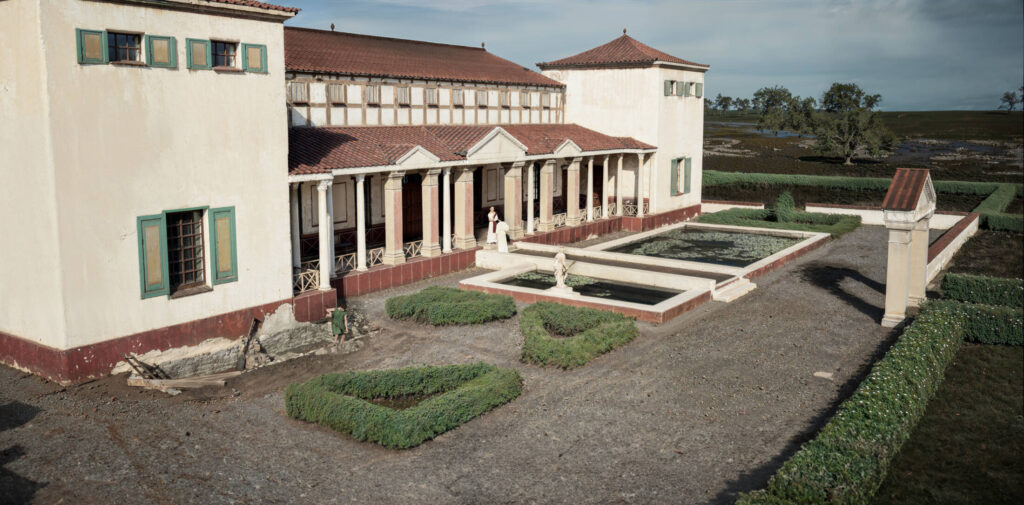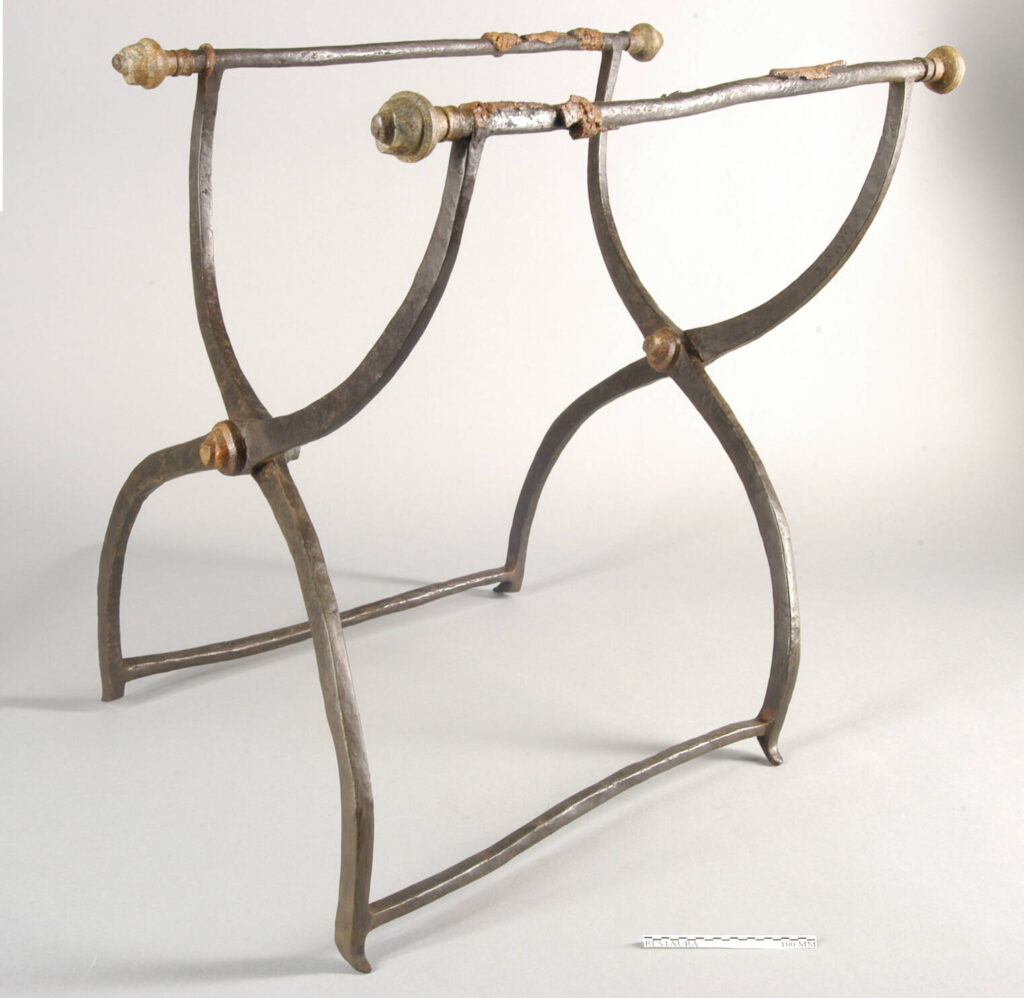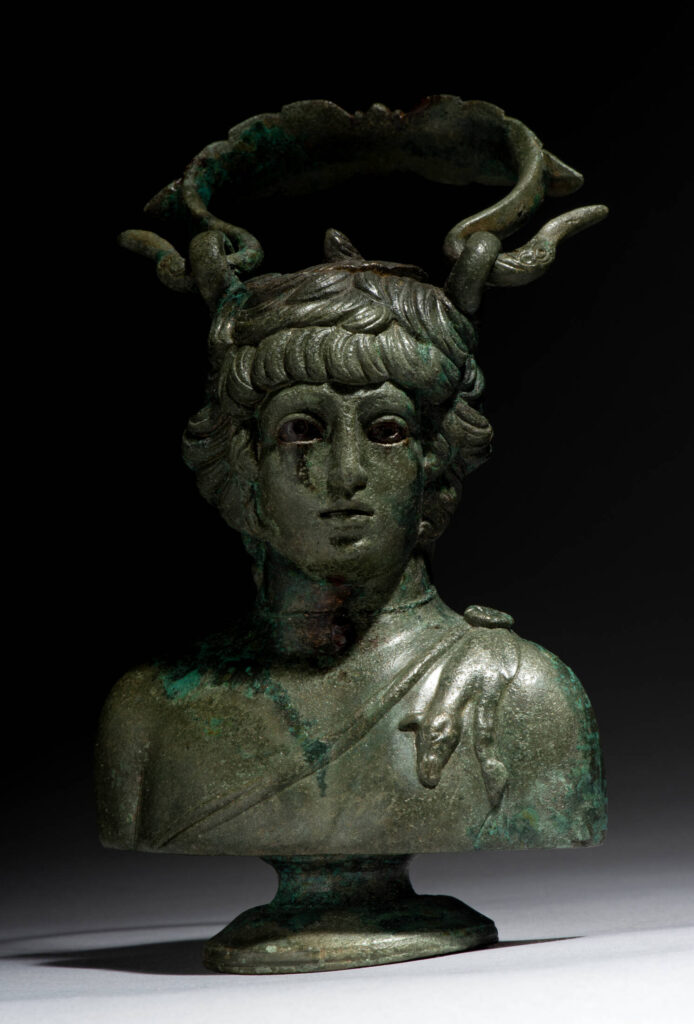Villa Vlengendaal
Vlengendaal, Bocholtz
ook through the hole and right there you can see where Villa Vlengendaal once stood.
It was part of a Roman villa landscape. So many finds have been made here that the area is now called the Roman Valley.
Villa Vlengendaal had a monumental main building with two annexes. The complex was discovered in 1910 and excavated in the following years by archaeologists of the LGOG and the National Museum of Antiquities. Villa Vlengendaal had one of the larger main buildings in Roman Limburg. Remarkable is not only the symmetrical layout, with projecting wings or corner rooms on each side, but also the elegant bathhouse integrated on the left-hand side of the building. At the front, the villa featured a veranda with Corinthian columns and a walled ornamental garden. Later, a kind of bridge was built across the ornamental pond in front of the villa. The interior was as splendid as the exterior, with rooms richly decorated. Countless fragments of wall paintings bear witness to this. The left front corner room of the villa even had a mosaic floor – the only one known from a villa in Limburg. The inhabitants of Villa Vlengendaal were therefore likely to have been wealthy.
The grave of the “man of Bocholtz” probably belongs to Villa Vlengendaal, making it one of the few examples where we not only know the building but also have an image of one of its residents. Both the grave goods and the villa itself testify to considerable prosperity.
Villa Vlengendaal was not alone here. As far as we know, three other villas lay nearby. One particularly remarkable find was a perfectly preserved cinerary chest, complete with all its grave goods, discovered at the foot of the slope below Villa Vlengendaal. The Bocholtz cinerary chest is now kept in the old library of the village. In 1983, three amateur archaeologists discovered a huge coin hoard of some 700 Roman coins in the Roman Valley.
Discover
- Discover the story of Roman Bocholtz at Hoeve Overhuizen
Fun to know
- South Limburg: the granary of the Romans
- The Romans quickly realized how fertile the loess soil in South Limburg was. They made grateful use of it for cultivating large amounts of spelt. On a smaller scale, other grains were also grown, such as emmer, wheat, millet, barley, rye, and oats. This grain was transported via the Via Belgica to the Rhine, where thousands of Roman soldiers were stationed to defend the Empire’s borders. For all those hungry mouths, South Limburg was the granary.
- The cinerary chest of the man of Bocholtz
- At a short distance from Villa Vlengendaal, a stone grave chest from Roman times was found in 2003. It contained the grave of a man, probably between 20 and 34 years old. The cist was placed in a wooden burial chamber, covered with stones. It is possible that a burial mound once stood above it. Both in the chest and in the wooden chamber, numerous objects were found, including toilet articles and writing tools. For the bathing ritual, the following items were discovered: two bronze skin scrapers (strigiles), a bronze wash basin, a bronze jug, and a bronze jar for ointment or oil. Did you know that the jar was made in the shape of Emperor Hadrian’s beloved, Antinous? That the deceased was literate is shown by his bronze inkwell and an iron stylus. With this, one could inscribe a text into the wax layer of a writing tablet and erase it again. Imprints of wood and reed were found in the rust layer of the stylus, possibly indicating reed pens. There are also indications that a horseman was buried here: iron and bronze horse gear, bronze spurs, a large iron lance tip for hunting, a dagger with an iron blade in a bronze-decorated sheath, an iron axe, and a knife. The luxury of the grave is also clear from a silver spoon, a bronze oil lamp on a stand, and a beautiful folding chair of iron with bronze fittings. Finally, the grave contained a large amount of glass and bronze tableware. The colorless glassware—about 26 plates, bowls, dishes, bottles, and jugs—was heavily affected by the soil. The grave probably belonged to Villa Vlengendaal, making it one of the rare examples where we not only know the villa building but also have an image of one of its residents. Both the grave goods and the villa itself testify to great wealth.
- Image credits
- Floor plan Villa Vlengendaal – Henk Hiddink; 3D reconstruction – Remy Kooi, Submedia; Bronze oil jar – RMO; Iron folding chair – Provincial Depot for Archaeological Finds Limburg
